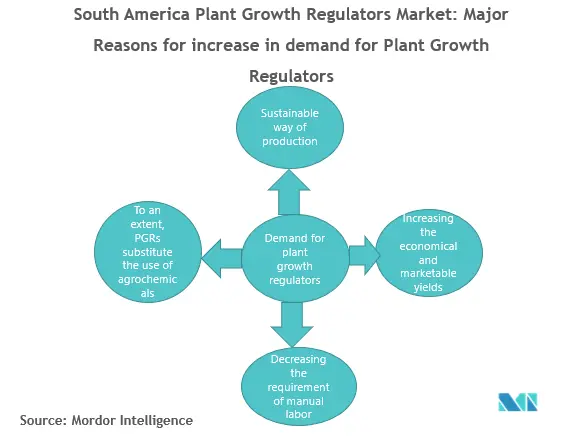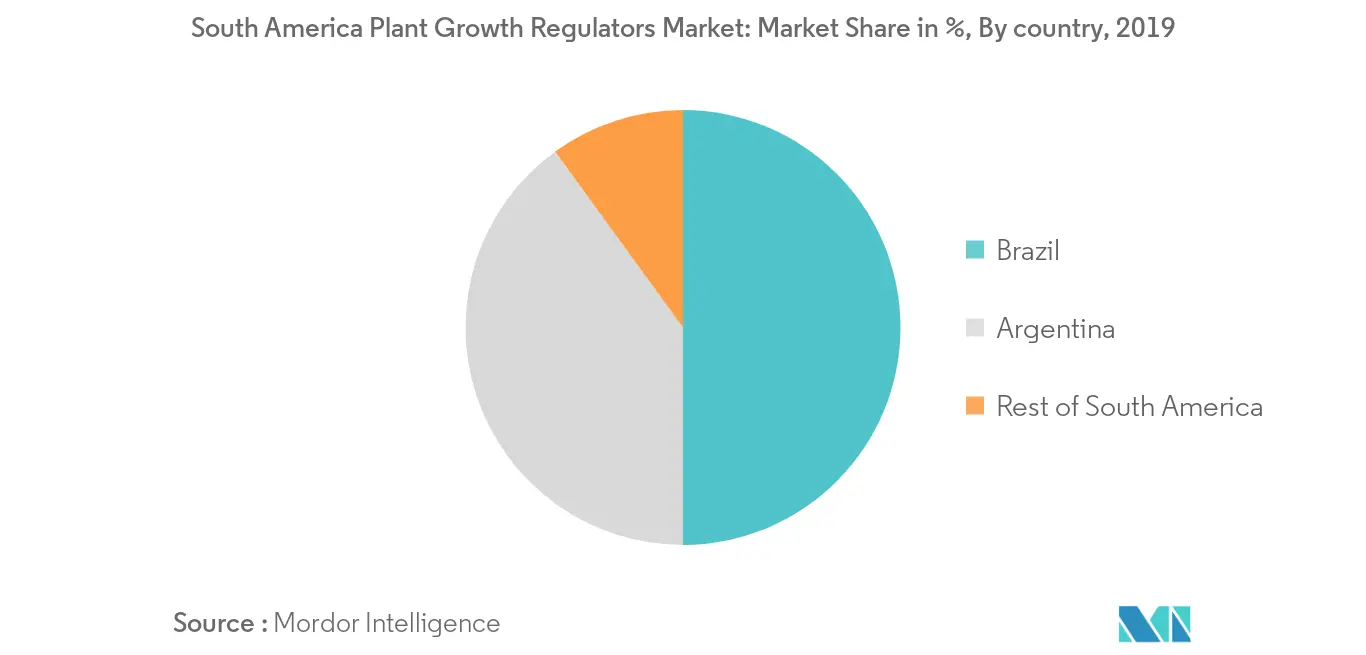Market Trends of South America Plant Growth Regulators Industry
This section covers the major market trends shaping the South America Plant Growth Regulators Market according to our research experts:
Aiding the Increase in Crop Profitability
Plant growth regulators have become popular across the region, as they aid in increased crop yields and better management of the crop. The application of plant growth regulators in the removal of excessive number of young fruits from pear trees is a common practice in orchard management, which must be done within 30 days of blooming. Thus, the availability of labor should align with this practice. Due to decreased labor force, plant growth regulators reduced the total biological yield but increased the portion of marketable yield and fruit size, thus, reducing the unmarketable produce. Additionally, it helped ease the use of mechanical harvesters, making harvesting easier and reducing the cost of human labor. This, in turn, has boosted the profitability of the crops, as more of the produce becomes marketable. Thus, the application of plant growth regulators yielded considerable success in the processes of plant development, such as flowering and fruit development, as well as ripening, harvesting, and post-harvesting of fruits and vegetables. Thus, plant growth regulators are aiding in the increase of crop production, further boosting the crop profitability.

Brazil Dominates the Market
Brazil is one of the major consumer of plant growth regulators in the region. The increased emphasis on sustainable agriculture is driving the market growth for plant growth regulators in the country. Cereals and oilseeds occupies the major share of plant growth regulators followed by fruits & vegetables in the country. Microquimica Tradecorp, NuFarm Ltd and Bayer crop science AG are some of the major players which have their presence in the country.


